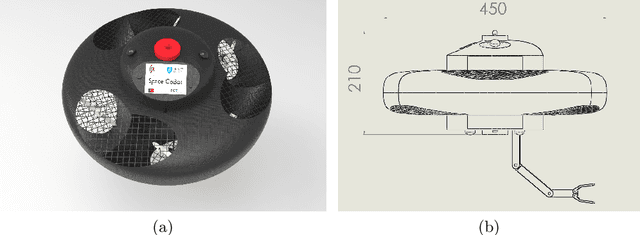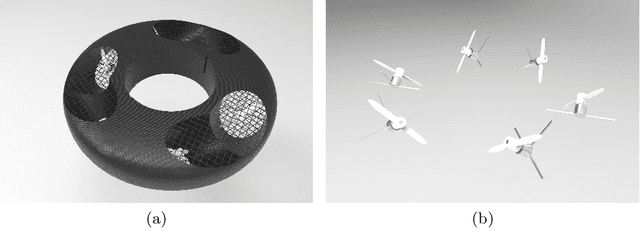Pedro Roque
Towards Open-Source and Modular Space Systems with ATMOS
Jan 28, 2025



Abstract:In the near future, autonomous space systems will compose a large number of the spacecraft being deployed. Their tasks will involve autonomous rendezvous and proximity operations with large structures, such as inspections or assembly of orbiting space stations and maintenance and human-assistance tasks over shared workspaces. To promote replicable and reliable scientific results for autonomous control of spacecraft, we present the design of a space systems laboratory based on open-source and modular software and hardware. The simulation software provides a software-in-the-loop (SITL) architecture that seamlessly transfers simulated results to the ATMOS platforms, developed for testing of multi-agent autonomy schemes for microgravity. The manuscript presents the KTH space systems laboratory facilities and the ATMOS platform as open-source hardware and software contributions. Preliminary results showcase SITL and real testing.
Space CoBot: modular design of an holonomic aerial robot for indoor microgravity environments
Apr 29, 2016



Abstract:This paper presents the design of a small aerial robot for inhabited microgravity environments, such as orbiting space stations (e.g., ISS). In particular, we target a fleet of robots, called Space CoBots, for collaborative tasks with humans, such as telepresence and cooperative mobile manipulation. The design is modular, comprising an hexrotor based propulsion system, and a stack of modules including batteries, cameras for navigation, a screen for telepresence, a robotic arm, space for extension modules, and a pair of docking ports. These ports can be used for docking and for mechanically attaching two Space CoBots together. The kinematics is holonomic, and thus the translational and the rotational components can be fully decoupled. We employ a multi-criteria optimization approach to determine the best geometric configuration for maximum thrust and torque across all directions. We also tackle the problem of motion control: we use separate converging controllers for position and attitude control. Finally, we present simulation results using a realistic physics simulator. These experiments include a sensitivity evaluation to sensor noise and to unmodeled dynamics, namely a load transportation.
Space CoBot: a collaborative aerial robot for indoor microgravity environments
Apr 21, 2016



Abstract:This paper presents a first contribution to the design of a small aerial robot for inhabited microgravity environments, such as orbiting space stations. In particular, we target a fleet of robots for collaborative tasks with humans, such as telepresence and cooperative mobile manipulation. We explore a propeller based propulsion system, arranged in such a way that the translational and the rotational components can be decoupled, resulting in an holonomic hexarotor. Since propellers have limited thrust, we employ an optimization approach to select the geometric configuration given a criteria of uniform maximum thrust across all directions in the body reference frame. We also tackle the problem of motion control: due to the decoupling of translational and rotational modes we use separate converging controllers for each one of these modes. In addition, we present preliminary simulation results in a realistic simulator, in closed loop with the proposed controller, thus providing a first validation of the followed methodology.
 Add to Chrome
Add to Chrome Add to Firefox
Add to Firefox Add to Edge
Add to Edge